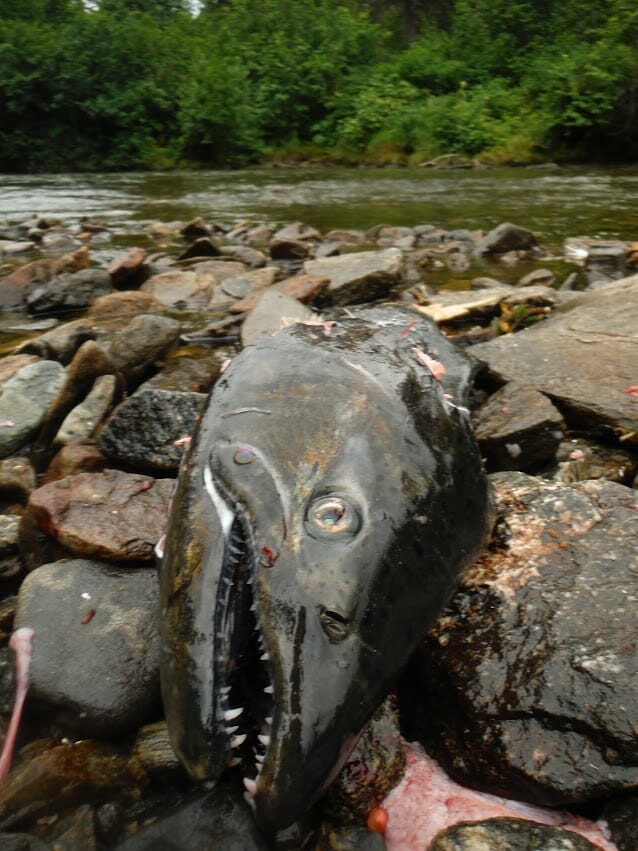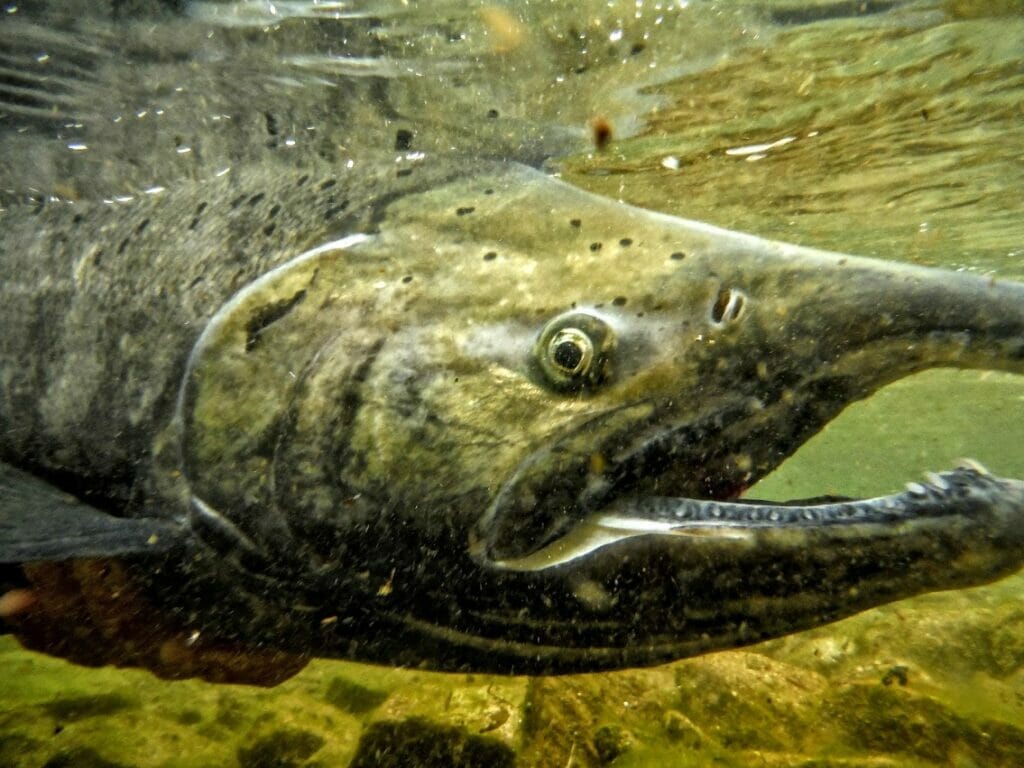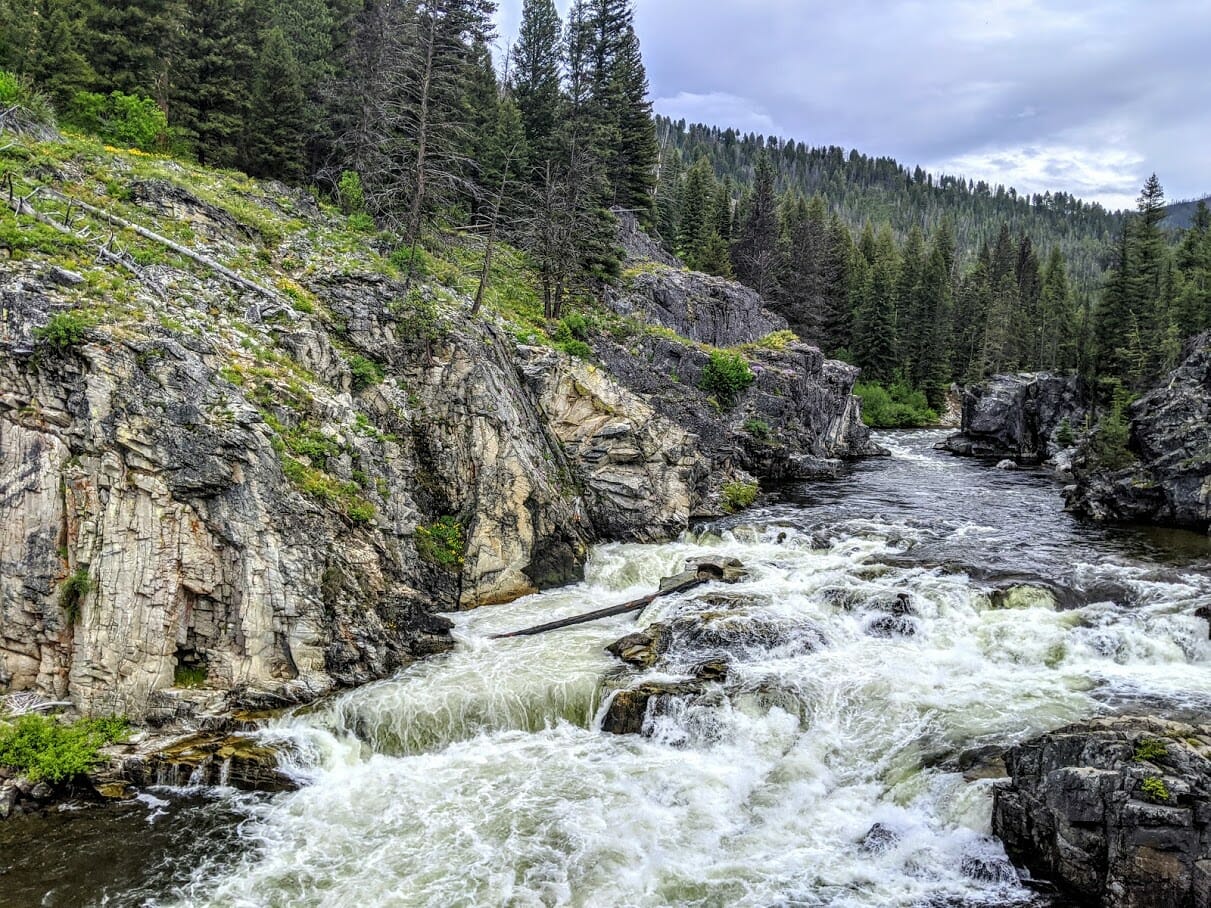Why do we need wild salmon and steelhead to thrive in the Snake River? Because they make connections.
Wild salmon connect the Sawtooth Mountains to the Pacific Ocean. Fish born in the rivers find their way to the sea, only to return at the end of their lives to spawn, die and decay—in the process bringing ocean nutrients to the high country.
They connect the Nez Perce, Shoshone-Bannock, and other indigenous tribes to their ancestral waters and lands. They connect parents to kids, and grandfathers to granddaughters in the now-jeopardized ritual of fishing for them.
Wild Snake River salmon and steelhead connect us to our solemn obligation to care for God’s wild creation, and to pass it on intact.

These connections are broken by the four massive dams we placed in the wild salmon and steelhead migration corridor on the lower Snake River in eastern Washington in the 1960s and 1970s. By removing these dams, we can recover these connections. We can bring back these magical fish that swim more than 700 miles from the ocean, climb more than 6,500 feet in elevation—all the while never feeding—to return to their birth streams.
Perhaps the most powerful lost connection is the unifying sense of community brought to us by salmon. Instead of celebrating one of nature’s most remarkable creatures, we fight a zero-sum game where salmon advocates win in the courts, but the fish continue to slip toward extinction because the four lower Snake River dams remain in place. Wild chinook salmon in Idaho are down to about 1 or 2 percent of their historic numbers. Steelhead similarly cling to survival.
Idaho’s salmon and steelhead must traverse eight dams, including the four on the lower Snake River. A recent study suggests that an average of 23 percent of juvenile salmon are lost per dam as a result of their experience in the hydro-system. This includes mortality as they pass through or around the dams, during transit through slow-moving, often too hot, predator-ridden reservoirs, and the “delayed mortality” that occurs in the estuary and ocean following this life-sucking journey to the sea.
Idaho and its vast wilderness contains some of the finest salmon and steelhead habitat on the planet. Scientists tell us that within 60 years, the Snake River basin will contain 65 percent of the coldest water and most climate-resilient stream habitats in the country. If we want to recover abundant, healthy salmon and steelhead in the Snake River, we need to commit to full river restoration of the Snake—beginning with the removal of the four lower Snake River dams.
Rather than emphasize who loses by taking down the four lower Snake River dams, what if we focused on winning? What if the conversation focused on recovering connections to our lands and waters, the salmon that inspire us, and most importantly, to one another? Like our contemporary politics, much of environmental policy today—climate change, clean water, endangered species, the list goes on—is cast in the context of winners and losers. When it comes to recovering Snake River salmon and steelhead, that is a false choice. We can have our fish, and eat them, too.
We can take down the four lower Snake River dams and make sure that no community and no economic interests are left behind. We can remove the four lower Snake River dams and replace their power production with other carbon-neutral sources. Upgraded rails and roads can move grain from fields to seaports. Communities like Lewiston, Idaho, and Clarkston, Wash., can enjoy the economic boost of revitalized waterfronts connected to a free-flowing river. We can modify irrigation systems so farmers have water for their crops. We can provide certainty to the region’s electric utilities by providing alternative power sources and ending expensive litigation over the loss of salmon.

These things we can replace. The one thing we cannot replace is the salmon’s migration corridor. Wild salmon need a free-flowing river to survive, and so long as the four lower Snake River dams remain in place, they will continue to decline.
Many years ago, snorkeling an Idaho mountain stream, I came upon a pair of spawning steelhead 700 miles and thousands of feet in elevation from the ocean. Battered and beaten, those two fish remain my connection to conservation.
Henry David Thoreau once wrote, “I have great faith in a seed. Convince me that you have a seed there, and I am prepared to expect wonders.” The recovery of Northwest’s salmon and steelhead is the seed to improving social and economic well-being and restoring our collective connection to the lands and waters that sustain us.
Chris Wood is the president and CEO of Trout Unlimited.



